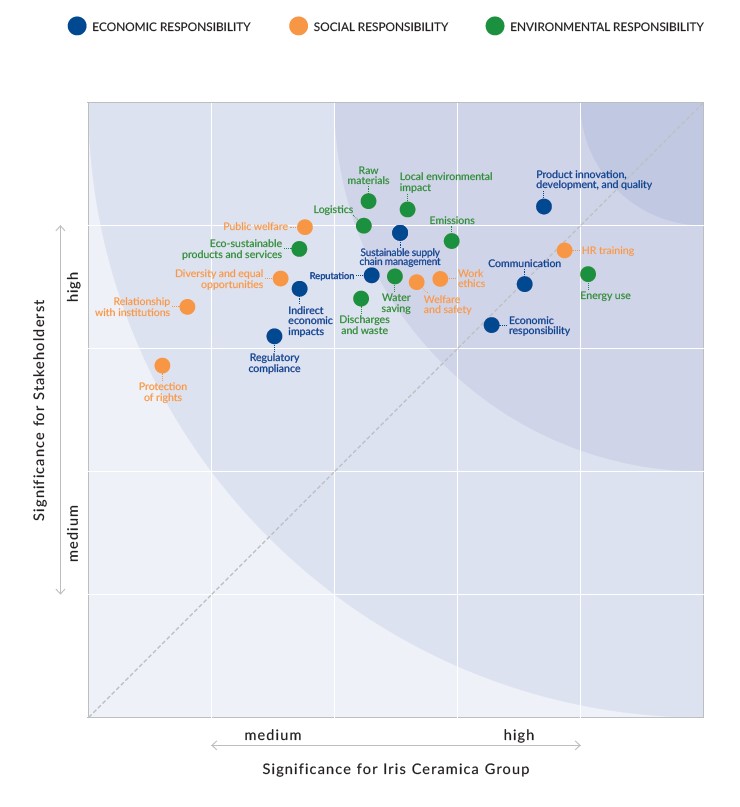MATERIALITY METHOD AND MATRIX
1 LETTER FROM THE CEO
2 THE GROUP
3 THE ORGANIZATION
4 THE PRODUCT
5 THE SUPPLY CHAIN
6 THE ENVIRONMENT
7 OUR PEOPLE
8 THE COMMUNITY
9 MATERIALITY METHOD AND MATRIX
10 OBJECTIVES
11 SDGS
MATERIALITY METHOD AND MATRIX
MATERIALITY ANALYSIS
One of the fundamental elements of sustainability reporting is the definition of the so-called Materiality Matrix, which requires the organization to listen to all its stakeholders and hold discussions with them. Targeted meetings have therefore been held in recent months with the Group’s various internal and external stakeholders, in accordance with the Global Reporting Initiative (GRI) method, which aims to identify priorities for the organization's sustainability strategy. These meetings with turned out to be particularly fruitful as they provided an opportunity for open discussion to gather information and suggestions with which to further develop the relationship between the Iris Ceramica Group and the various stakeholders, information which the organization has treasured with a view to ensuring the continuous improvement of its sustainability strategy.
The outcome is summarized in the Cartesian graph, where the X axis shows the importance of issues according to the company and the Y axis their importance to external stakeholders. The intersection of the two data shows the position of the relevant Issues (chosen by the Group) which provides various pieces of information. Generally speaking, there is considerable consistency between the values expressed internally and those indicated externally, as many many relevant Issues are found near the bisector, a sign that there is a high level of agreement on the priorities. These are the topics that are of greatest interest:
- Innovation, development and product quality
- Optimization of human resources through training
- Increased efficiency of energy consumption
- Communication
- Economic responsibility
These five issues are positioned in the upper right quadrant and are therefore the areas where internal and external stakeholders suggest that more work needs to be done in the coming years, because they are considered to be crucial for the Group's sustainability strategy. Another aspect that emerged is the increased interest in issues related to environmental responsibility regarding raw materials, the management of environmental impacts, projects to reduce CO2 emissions, the sustainable management of logistics and the supply chain: clear evidence that environmental issues, in all their complexity, have now become of generally primary importance.
